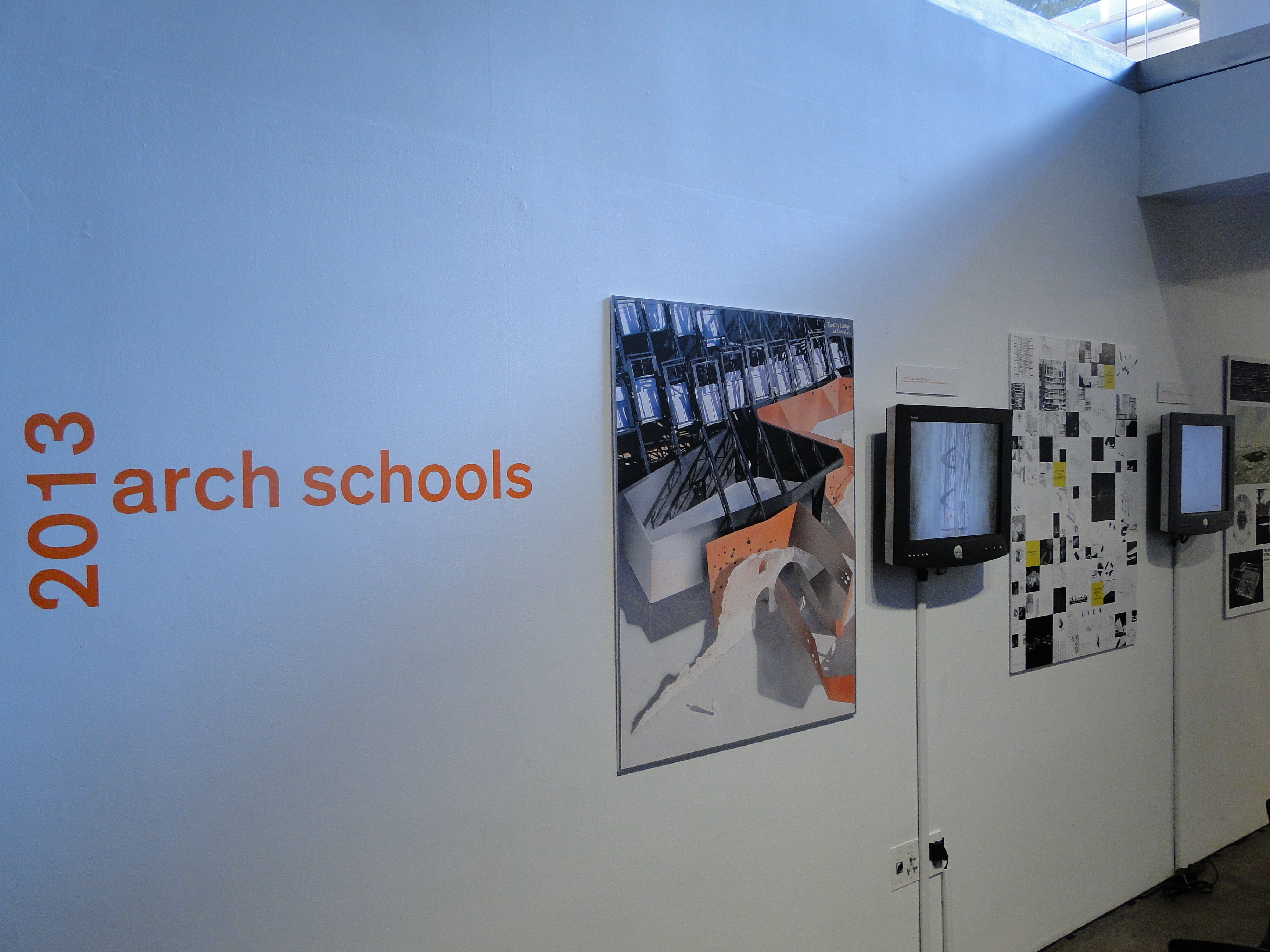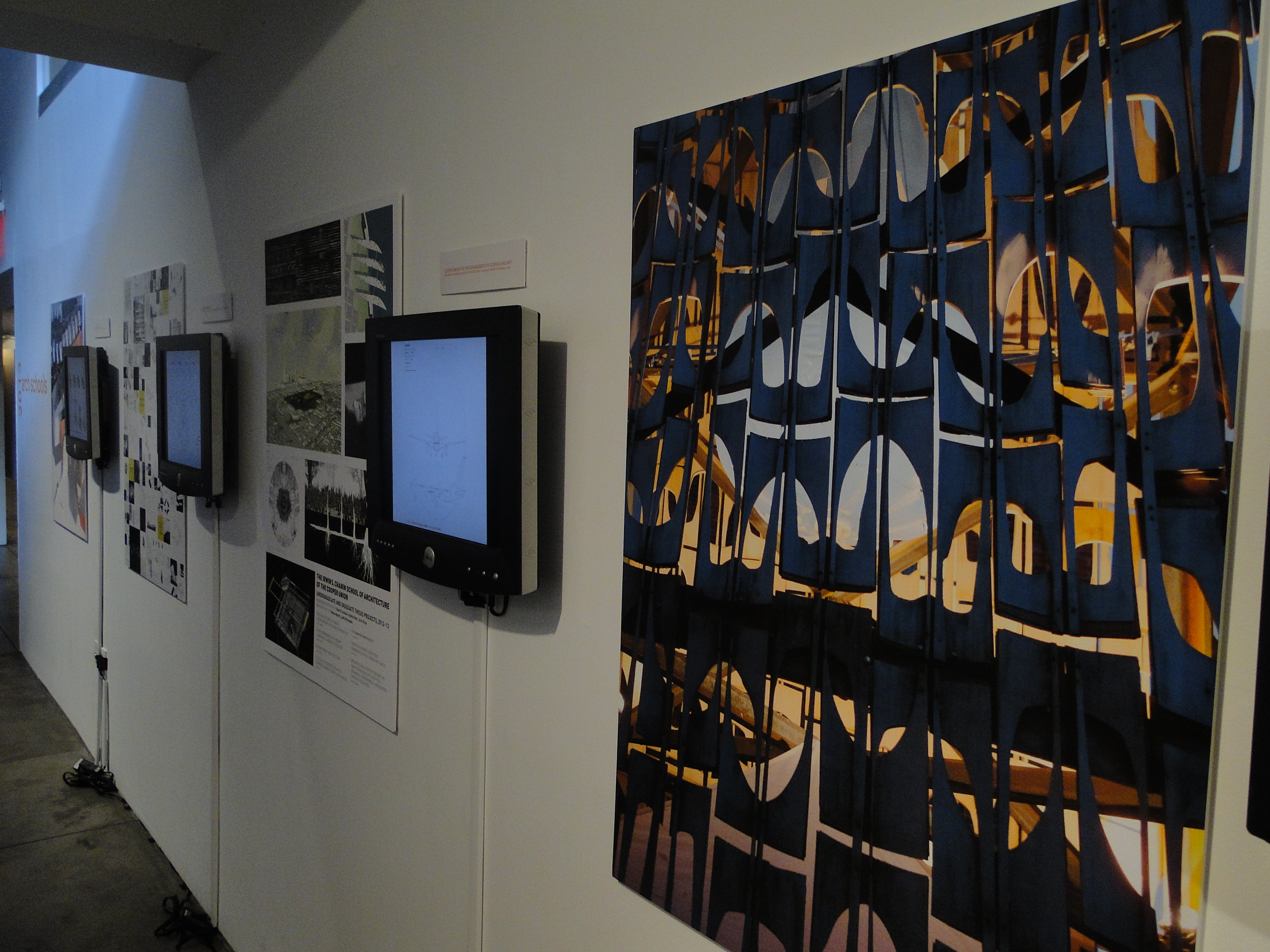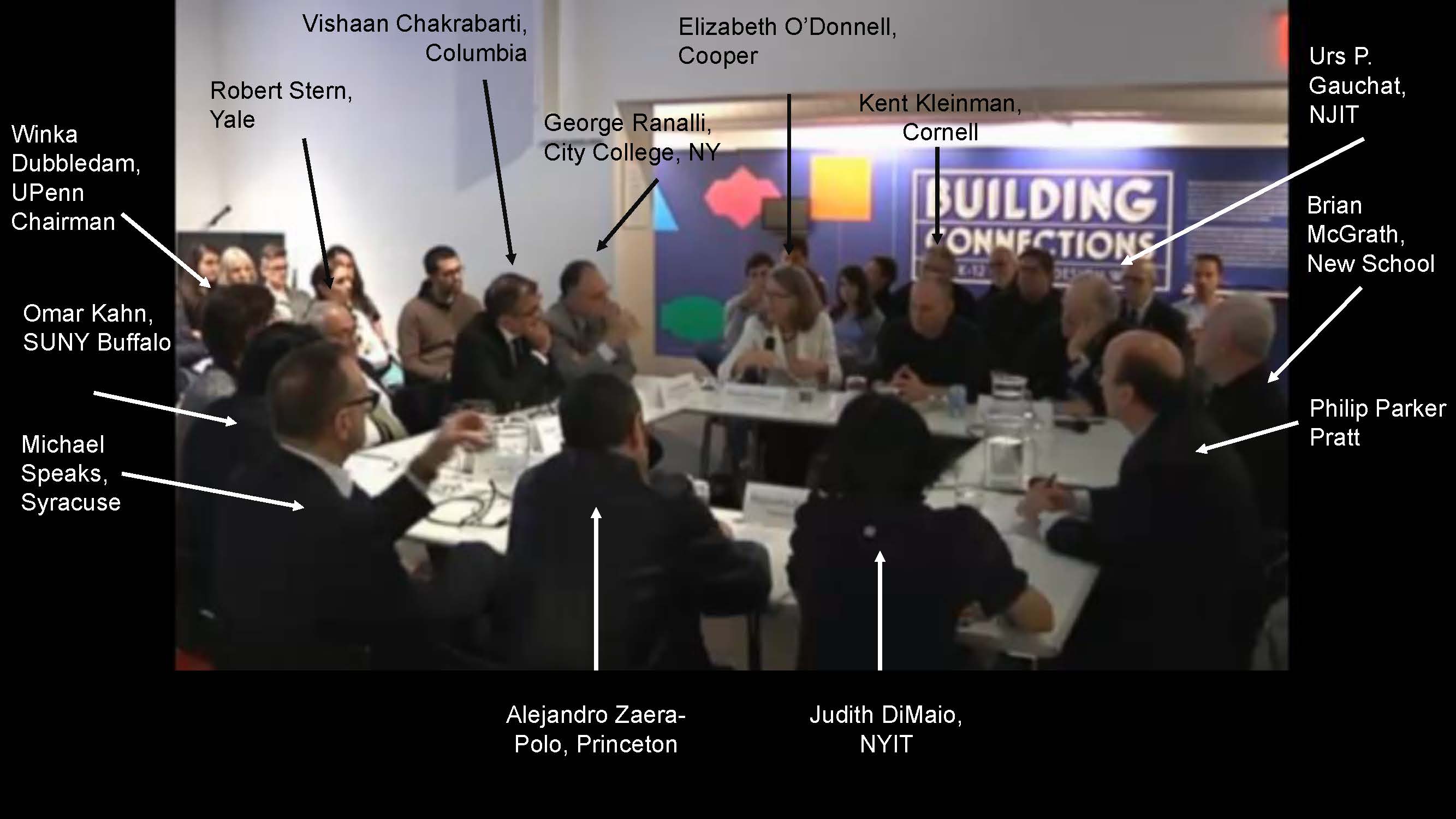by Melissa Marsh
So what did you do on Saturday night? Perhaps not your usual weekend evening activity, on 11.16.13, a formidable group of academics, administrators, and education enthusiasts assembled at the Center for Architecture to discuss, debate, and possibly provoke the state of architectural education at this moment in time.
Lance Jay Brown, FAIA, AIANY 2014 President, set the stage by welcoming attendees to the 9th annual Deans’ Roundtable. He took the time to set a backdrop of local and world events that have transpired in the last decade. He recalled the first of these roundtables when, in 2004, architecture was “brightly illuminated by post-9/11” issues: we were preparing for the new Bloomberg Administration; developments like Via Verde in the Bronx and Hudson Yards were only distant dreams; and the full impact of climate change and its potential for our profession had not yet been exposed – as it now has, post-Sandy. Finally, at that time the world was not yet 50% urbanized, an observation which precipitated the opportunity to announce his upcoming AIANY 2014 Presidential Theme: Civic Spirit, Civic Vision.
Brown concluded with a special welcome to the 14 participating schools, and the students whose work was represented in the surrounding exhibition. He opened the stage to a star-studded panel of individuals who, although peers, must spend significant time talking about one another, reading one another’s work and competing for press, faculty, funding dollars, are rarely seen together in such a forum.
As moderator, Vishaan Chakrabarti, director of Columbia University’s Center for Urban Real Estate (CURE) and a partner at SHoP Architects, began the evening discussion with a provocation about the nature of architectural education. The core question, he proposed, is one of architecture being the “last self-generative and synthetic pedagogical” form. He described architecture education as one of asking students to self-generate and synthesize both the problem and the solution. He holds this idea as central to how we learn to be designers: both observers and articulators of the problems we seek to solve. This model could become essential for addressing environment and social mobility: the true problems of our world. Do you agree? Yes or no?
Omar Khan, chair of the Department of Architecture at State University of New York at Buffalo (SUNY), began the response, explaining that the model Chakrabarti described suits a variety of visionaries and inventors, and that education focuses on honing of a craft for this purpose. Khan would seek to describe as “generative” this projective approach, which is required of business, engineering, and other disciplines. Left unsaid by Kahn is the potential for the generative approach of architectural education to not only avoid extinction, but also to serve as a model for other disciplines.
Elizabeth O’Donnell, AIA, acting dean at The Irwin S. Chanin School of Architecture of The Cooper Union, took the opportunity to critique a larger educational context. At Cooper Union, she explained, what you do in the design studio is an “analytic and synthetic process, it is no different than what we expect in any discipline.” The real concern, she said, was not with architecture, but with a broader American college and university education which has turned into a product for purchase rather than a process for learning to identify and solve problems.
Brian McGrath, AIA, research chair in urban design at the School of Constructed Environments at Parsons The New School for Design, took the opportunity to shift the conversation. He first pointed out where in the conversation the term design had been chosen, and where colleagues had used the word architecture to describe the topic at hand. More importantly, McGrath sought to explore the potential of design for social change, and the differences between design in the context of social research institutions and liberal arts institutions. As with others throughout the evening, McGrath relied upon his own education and teaching history to compare institutions, and the embedded perspectives that are reinforced inside each of these.
Winka Dubbeldam, Assoc. AIA, chair of Architecture at University of Pennsylvania School of Design, shifted the focus from academic context to professional and industry context, explaining UPenn’s development of a “second masters,” a post-professional degree program. UPenn made the foundation of the program about the “elements of building a practice” and incorporating a real world vision. It is about “critical thinking and design intelligence,” she explained. Instead of teaching to what may have been an old definition, they first explored “what is the practice and where is that going?”
Dubbeldam explained a recent event held at UPenn called “New Normal,” focused on the changes to the profession that have evolved from 20 years of digital design. She encouraged the profession to stop fighting to control this evolution, but to enable and celebrate the wide diversity of professional paths that are seeded by an architectural education.
Alejandro Zaera-Polo, dean of Princeton University School of Architecture, again shifted the topic to the political and social significance of architecture, and the importance of a broad education in social, political, technological, and global subjects. He emphasized the role of institutions in both educating and authenticating: “I am rethinking what the critical areas are that must be seen – a liberal art is a form of thinking, not a set of practices for ticking boxes.” Continuing the political science theme, Robert A.M. Stern, FAIA, dean of the Yale University School of Architecture, lamented the absence of basic historical education among today’s student population. Broadly opposed to five-year programs, Stern cautioned against a rush to provide a technical education in architecture, as it would be meaningless without a proper foundation in history, politics, social science, and liberal arts.
Following the undergraduate and liberal arts debate, the conversation got to the nuts and bolts of design delivery when Urs P. Gauchat, Hon. AIA, dean of the College of Architecture and Design at the New Jersey Institute of Technology, brought up some very revealing statistics about who we are educating, and for what purpose. This “future of the future,” as students and their future built work became known in the conversation, would be responsible for renovating the 230 billion square feet that is the current built space of the United States. In the years ahead, Gauchat explained, 96 billion square feet will be renovated, and 106 billion will be new construction. For this we must be both highly trained technically and able to get hired to do the work. Thus, students need to be able to create, demonstrate, and articulate the value of architecture.
During the Q&A, George Ranalli, AIA, dean of The Bernard and Anne Spitzer School of Architecture at the City College of the City University of New York and AIANY Public Director for Educational Affairs, responded to audience provocations about the role of education in developing individuals. Ranalli explained that greater exchange between disciplines and public debate is essential. Students, he believes, should be pushed towards “the free-flowing expression of ideas, the ability to stand up, take a position, and articulate that position comfortably, and have an open exchange.” The public review, the approach of “speaking on behalf of ideas,” needs to come back to the studio. Ranalli also supported Khan’s statement that students are very capable, and need to be given the space to debate and become involved.
The sprawling conversation continued across topics of history, technology, preparedness of students for various programs, the diversity of interests, and the needs of those represented in the room, from five-year programs to post-professional Master’s and Ph.D. programs. As with many great conversations, there seemed to be as many or more questions raised than questions answered. If I had to highlight two for future interrogation, it would be Dubbeldam’s provocation of whether education should follow or lead the profession in terms of changing the shape of architecture, and Stern’s observation that we are without a “precise definition of research” as it relates to the architecture profession and the built world. If you are interested in exploring more, I highly recommend watching the video here.
Melissa Marsh is a workplace strategy and change management consultant with a passion for social research and architectural education. She is delighted to be celebrating the one-year anniversary of founding Plastarc, Inc. She is a regular contributor to e-Oculus, and can be reached at melissa@plastarc.com.
Event: Arch Schools 2013 Exhibition Reception and Deans’ Roundtable
Location: Center for Architecture, 11.16.13
Speakers: George Ranalli, AIA, Dean, The Bernard and Anne Spitzer School of Architecture, City College of the City University of New York; Elizabeth O’Donnell, AIA, Acting Dean, The Irwin S. Chanin School of Architecture, The Cooper Union; Judith DiMaio, FAIA, Dean, School of Architecture and Design, New York Institute of Technology; Urs P. Gauchat, Hon. AIA, Dean, College of Architecture and Design, New Jersey Institute of Technology; Philip Parker, Assistant Chair, Graduate Architecture and Urban Design Program and Adjunct Associate Professor, Pratt Institute; Kent Kleinman, Dean, College of Architecture, Art, and Planning, Cornell University; Omar Khan, Chair, Department of Architecture, State University at Buffalo (SUNY); Robert A.M. Stern, FAIA, Dean, School of Architecture, Yale University; Winka Dubbeldam, Assoc. AIA, Chair, Architecture, School of Design, University of Pennsylvania; Michael Speaks, Dean, School of Architecture, Syracuse University; Alejandro Zaera-Polo, Dean, School of Architecture, Princeton University; Vishaan Chakrabarti, Director, Columbia University Center for Urban Real Estate (CURE), and Partner, SHoP Architects (moderator); and Lance Jay Brown, FAIA, AIANY 2014 President (opening remarks)
Organized by: Center for Architecture
Sponsored by: Mark Moran Solutions







